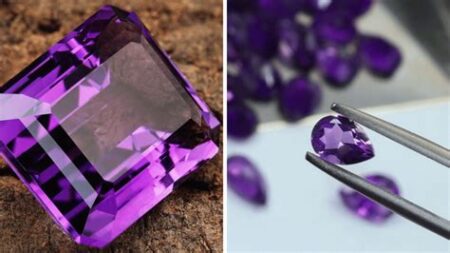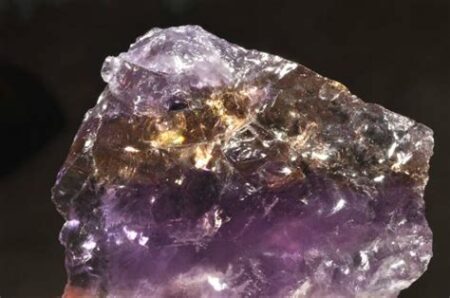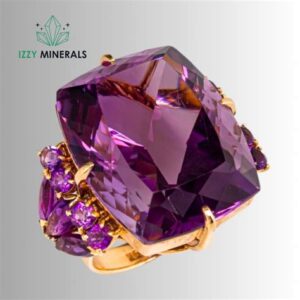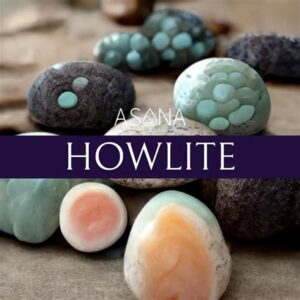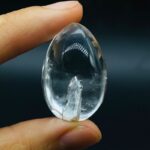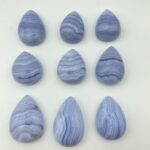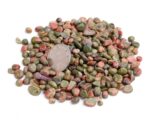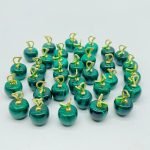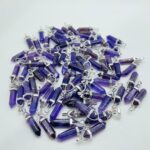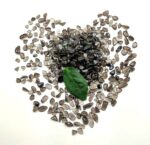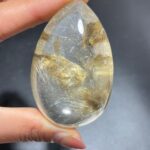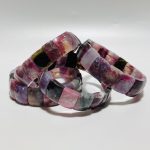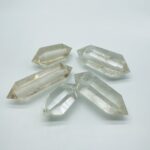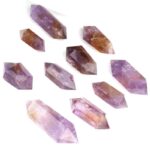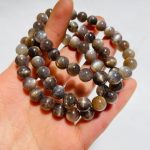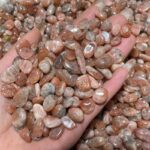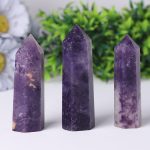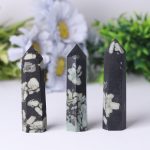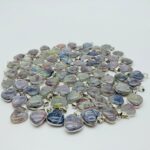Black lights, also known as ultraviolet (UV) lights, emit radiation with wavelengths shorter than visible light, making them invisible to the human eye. However, certain substances have the unique ability to absorb this radiation and re-emit it as visible light, a phenomenon known as fluorescence. This results in a dazzling array of colors that glow under black light, transforming ordinary objects into vibrant and otherworldly creations.

Uncovering the Spectrum of Colors
The colors that glow under black light are determined by the specific fluorescent properties of the substances involved. Here’s a comprehensive guide to the diverse hues you can expect:
- White: The most common and versatile color, white is produced by a wide range of fluorescent materials, including white paint, paper, fabric, and many minerals.
- Neon Green: This vibrant shade is typically associated with fluorescent highlighters, glow sticks, and safety vests. It’s commonly found in paints, inks, and dyes.
- Pink: A soft and ethereal color, pink is often found in fluorescent cosmetics, nail polish, and hair dye. It’s also present in certain minerals and synthetic materials.
- Blue: A calming and inviting hue, blue is emitted by a variety of fluorescent substances, including blue paints, inks, and fabrics. It’s also found in some minerals and gemstones.
- Yellow: This cheerful and attention-grabbing color is commonly found in fluorescent markers, highlighters, and safety gear. It’s also present in some paints, fabrics, and minerals.
- Red: A bold and striking color, red is less common under black light but can be found in certain fluorescent paints, fabrics, and inks. It’s also present in some minerals and gemstones.
- Purple: A mysterious and enchanting color, purple is produced by a combination of blue and red fluorescent materials. It’s found in some paints, fabrics, and gemstones.
- Orange: A vibrant and playful color, orange is less common under black light but can be found in certain fluorescent paints, fabrics, and inks. It’s also present in some minerals and gemstones.
Fluorescence in Everyday Life
The ability of certain substances to glow under black light has numerous practical and aesthetic applications, catering to diverse industries and consumer needs.
- Crime Scene Investigation: Forensic scientists rely on fluorescent powders to detect fingerprints, bloodstains, and other evidence that may be invisible to the naked eye under normal lighting conditions.
- Counterfeit Detection: Many currencies, credit cards, and official documents incorporate fluorescent inks or watermarks to prevent counterfeiting and fraud.
- Medical Diagnostics: Doctors use fluorescent dyes and tracers to enhance the visibility of specific tissues and organs during medical imaging procedures, such as endoscopy and angiography.
- Safety and Security: Fluorescent materials are incorporated into safety vests, traffic signs, and emergency equipment to improve visibility and enhance safety in hazardous environments.
- Art and Entertainment: The use of fluorescent paints, fabrics, and props in stage shows, concerts, and art installations creates a captivating and immersive experience for audiences.
Motivations and Pain Points
Customers who seek products and services related to fluorescence under black light have specific needs and motivations that drive their purchasing decisions:
- Crime Scene Investigators: Accuracy, reliability, and speed are paramount in detecting and preserving evidence.
- Counterfeit Prevention Experts: Effective detection of counterfeit goods protects consumers, businesses, and the economy.
- Medical Professionals: Improved visibility and precision in medical imaging procedures lead to better patient outcomes.
- Safety and Security Managers: Enhanced visibility in hazardous environments reduces accidents and protects lives.
- Art and Entertainment Professionals: Unique and eye-catching fluorescence effects captivate audiences and create unforgettable experiences.
Innovation for Novel Applications
The transformative power of fluorescence under black light inspires new ideas for innovative applications in various industries:
- Invisible Communication: Developing invisible inks and pigments for secure communication in covert operations.
- Non-Invasive Diagnostics: Creating fluorescence-based sensors for remote and non-invasive medical diagnostics.
- Smart Textiles: Incorporating fluorescent fibers into fabrics to create interactive and responsive clothing.
- Enhanced Lighting: Utilizing fluorescence to create energy-efficient lighting systems with vibrant and dynamic effects.
- Augmented Reality: Using fluorescent materials to enhance the experience of augmented reality applications, allowing users to interact with virtual objects in new ways.
Glow-in-the-Dark Vocabulary
- Fluorescence: The process by which certain substances absorb UV radiation and re-emit it as visible light.
- Fluorescent Pigment: A pigment that glows brightly under black light.
- Black Light Lamp: A light source that emits mostly UV radiation.
- Ultraviolet (UV) Radiation: Radiation with wavelengths shorter than visible light, invisible to the human eye.
- Phosphor: A substance that exhibits fluorescence.
Tables for Enhanced Understanding
Table 1: Colors That Glow Under Black Light
| Color | Substances | Applications |
|---|---|---|
| White | White paint, paper, fabric, minerals | Crime scene investigation, art |
| Neon Green | Fluorescent highlighters, glow sticks, safety vests | Nighttime visibility, marking |
| Pink | Fluorescent cosmetics, nail polish, hair dye | Fashion, beauty |
| Blue | Blue paints, inks, fabrics, minerals | Crime scene investigation, safety |
| Yellow | Fluorescent markers, highlighters, safety gear | Markings, safety |
| Red | Fluorescent paints, fabrics, inks, minerals | Safety, art, marking |
| Purple | Fluorescent paints, fabrics, gemstones | Art, decoration |
| Orange | Fluorescent paints, fabrics, inks, minerals | Art, decoration, safety |
Table 2: Applications of Fluorescence Under Black Light
| Industry | Application | Benefits |
|---|---|---|
| Crime Scene Investigation | Fingerprint and bloodstain detection | Accurate and reliable evidence collection |
| Counterfeit Detection | Protection of currencies and documents | Reduced fraud and counterfeiting |
| Medical Diagnostics | Enhanced visibility of tissues and organs | Improved patient outcomes |
| Safety and Security | Increased visibility in hazardous environments | Reduced accidents and increased safety |
| Art and Entertainment | Captivating and immersive experiences | Enhanced entertainment and artistic expression |
Table 3: Motivations for Using Fluorescence Under Black Light
| Industry | Motivations |
|---|---|
| Crime Scene Investigators | Accuracy, reliability, speed |
| Counterfeit Prevention Experts | Effective detection of counterfeit goods |
| Medical Professionals | Improved visibility and precision |
| Safety and Security Managers | Enhanced visibility in hazardous environments |
| Art and Entertainment Professionals | Unique and eye-catching effects |
Table 4: Innovative Applications of Fluorescence
| Application | Industry | Benefits |
|---|---|---|
| Invisible Communication | Covert operations | Secure and private transmission of information |
| Non-Invasive Diagnostics | Medical | Remote and non-invasive patient monitoring |
| Smart Textiles | Fashion | Interactive and responsive clothing experiences |
| Enhanced Lighting | Lighting | Energy-efficient and dynamic lighting effects |
| Augmented Reality | Technology | Enhanced user interaction and immersive experiences |
Frequently Asked Questions (FAQs)
Q1: What are the most common colors that glow under black light?
A1: White, neon green, pink, blue, yellow, red, purple, and orange are the most commonly observed fluorescent colors under black light.
Q2: How do substances glow under black light?
A2: Fluorescence is the process by which certain substances absorb UV radiation and re-emit it as visible light, resulting in a glow under black light.
Q3: What types of substances can glow under black light?
A3: A wide range of substances, including white paint, paper, fabric, cosmetics, minerals, and synthetic materials, can exhibit fluorescence.
Q4: What are some practical applications of fluorescence under black light?
A4: Fluorescence has diverse applications in crime scene investigation, counterfeit detection, medical diagnostics, safety and security, and art and entertainment.
Q5: How can I use fluorescence under black light to detect counterfeit goods?
A5: Many currencies, credit cards, and official documents incorporate fluorescent inks or watermarks to prevent counterfeiting. Using a black light can help identify these security features.
Q6: Is it safe to use black lights?
A6: Black light lamps are generally safe for occasional use. However, prolonged exposure to UV radiation can damage skin and eyes, so appropriate safety measures should be taken.
Q7: Can I create my own fluorescent objects?
A7: Yes, you can create fluorescent objects by using fluorescent paints, powders, or markers. These can be applied to various surfaces to achieve desired effects.
Q8: How can I enhance the visibility of fluorescent objects under black light?
A8: Turning off surrounding lights and using a higher-wattage black light lamp can significantly enhance the visibility and vibrancy of fluorescent objects.

